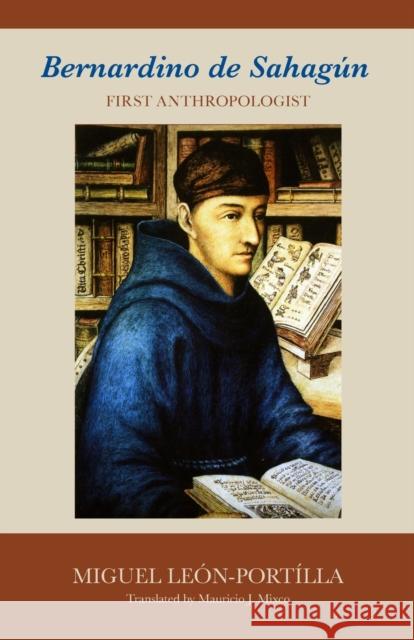Bernardino de Sahagun: First Anthropologist » książka
Bernardino de Sahagun: First Anthropologist
ISBN-13: 9780806142715 / Angielski / Miękka / 2002 / 338 str.
He was sent from Spain on a religious crusade to Mexico to detect the sickness of idolatry, but Bernardino de Sahagun (c. 1499-1590) instead became the first anthropologist of the New World. The Franciscan monk developed a deep appreciation for Aztec culture and the Nahuatl language. In this biography, Miguel Leon-Portilla presents the life story of a fascinating man who came to Mexico intent on changing the traditions and cultures he encountered but instead ended up working to preserve them, even at the cost of persecution.Sahagun was responsible for documenting numerous ancient texts and other native testimonies. He persevered in his efforts to study the native Aztecs until he had developed his own research methodology, becoming a pioneer of anthropology. Sahagun formed a school of Nahua scribes and labored with them for more than sixty years to transcribe the pre-conquest language and culture of the Nahuas. His rich legacy, our most comprehensive account of the Aztecs, is contained in his Primeros Memoriales (1561) and Historia General de las Cosas de Nueva Espana (1577).Near the end of his life at age 91, Sahagun became so protective of the Aztecs that when he died, his former Indian students and many others felt deeply affected.Translated into English by Mauricio J. Mixco, Leon-Portilla s absorbing account presents Sahagun as a complex individuala man of his times yet a pioneer in many ways."
He was sent from Spain on a religious crusade to Mexico to "detect the sickness of idolatry," but Bernardino de Sahagún (c. 1499-1590) instead became the first anthropologist of the New World. The Franciscan monk developed a deep appreciation for Aztec culture and the Nahuatl language. In this biography, Miguel León-Portilla presents the life story of a fascinating man who came to Mexico intent on changing the traditions and cultures he encountered but instead ended up working to preserve them, even at the cost of persecution.Sahagún was responsible for documenting numerous ancient texts and other native testimonies. He persevered in his efforts to study the native Aztecs until he had developed his own research methodology, becoming a pioneer of anthropology. Sahagún formed a school of Nahua scribes and labored with them for more than sixty years to transcribe the pre-conquest language and culture of the Nahuas. His rich legacy, our most comprehensive account of the Aztecs, is contained in his Primeros Memoriales (1561) and Historia General de las Cosas de Nueva Espana (1577).Near the end of his life at age 91, Sahagún became so protective of the Aztecs that when he died, his former Indian students and many others felt deeply affected.Translated into English by Mauricio J. Mixco, León-Portillas absorbing account presents Sahagún as a complex individual-a man of his times yet a pioneer in many ways.Miguel Leon-PortillaDirector of the Inter-American Indian Institute in Mexico City, Miguel Leon-Portilla is a significant young Mexican scholar. He holds B.A. and M.A. degrees (summa cum laude) form Loyola University at Los Angeles and the Ph.D. from the National University of Mexico. La Filosofía Náhuatl, the Spanish version of this book, received high praise from both Mexican and American scholars.Mauricio J. Mixco is Professor of Linguistics at the University of Utah. He is the author of A Mandan Grammar and A Kiliwa Grammar.











